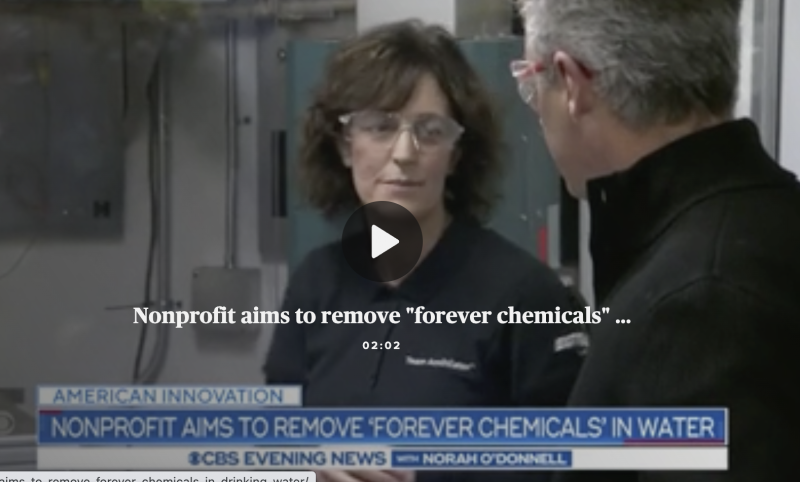New technology seeks to destroy toxic "forever chemicals" in drinking water
Published on by Water Network Research, Official research team of The Water Network in Technology
Researchers estimate more than 200 million Americans in all 50 states could have cancer-causing carcinogens in their drinking water. The toxic chemicals per- and polyfluoroalkyl substances, called PFAS, have been virtually indestructible — but new technology aims to change that.
Sandy Wynn-Stelt discovered too late that her Michigan home sat across from a former waste dump. Her husband died of cancer six years ago and she has had thyroid cancer. For more than 20 years, they drank well water contaminated with PFAS.
"You can't see it. You can't taste it. You can't smell it. You will not know it's there unless you test for it," Wynn-Stelt told CBS News.

PFAS — man-made, practically indestructible chemicals — became widely used for their ability to resist oil and water. They've been found in some firefighting foams, cosmetics and non-stick cookware, among other products. Because the chemicals don't break down in the environment, they can contaminate soil and drinking water sources, where they can accumulate and eventually make their way up the food chain.
At least 2,854 locations in 50 states and two territories are now known to be contaminated with the chemicals, according to the Environmental Working Group.
CBS News had exclusive access to the first demonstration of the technology, in which water containing PFAS was treated at a wastewater treatment plant. Heritage Crystal-Clean has several facilities around the country where it hopes to use the technology to treat wastewater.
A possible solution can't come soon enough for Wynn-Stelt, who is also a member of the advocacy group Great Lakes PFAS Action Network.
"It would be such a game-changer if we could do this," she said. "It's going to be the only way that we can keep this out of our waters, out of our streams, out of our food."
"'Supercritical water' means that you increase the temperature and increase the pressure and you get it into a special state, where the oxidation will occur more naturally. So in this special state, it breaks the [carbon–fluorine] bond," Dindal told CBS News.
Battelle said it has successfully used the process in its labs to essentially annihilate PFAS in drinking water and has begun partnering with the waste management company Heritage Crystal-Clean for additional testing.
"I absolutely think it's an answer that nobody has had before," Brian Recatto, CEO of Heritage Crystal-Clean, told CBS News. "We're hoping to have a scalable version of the plant within six to eight months."
CBS News had exclusive access to the first demonstration of the technology, in which water containing PFAS was treated at a wastewater treatment plant. Heritage Crystal-Clean has several facilities around the country where it hopes to use the technology to treat wastewater.
A possible solution can't come soon enough for Wynn-Stelt, who is also a member of the advocacy group Great Lakes PFAS Action Network.
"It would be such a game-changer if we could do this," she said. "It's going to be the only way that we can keep this out of our waters, out of our streams, out of our food."
Taxonomy
- PFAS